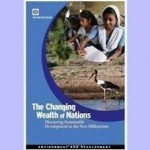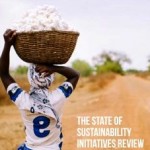 Marseille – When building large dams, benefits to local communities can go hand in hand with broader national development objectives, shows a study launched March 14 by IUCN (International Union for Conservation of Nature) and IIED (International Institute for Environment and Development) at the World Water Forum in Marseille.
Marseille – When building large dams, benefits to local communities can go hand in hand with broader national development objectives, shows a study launched March 14 by IUCN (International Union for Conservation of Nature) and IIED (International Institute for Environment and Development) at the World Water Forum in Marseille.
The study, “Sharing the Water, Sharing the Benefits”, examines six dams built in Senegal, Mali and Burkina Faso, looking into how they affected local people’s lives and development opportunities. It shows that securing access to local development benefits can be achieved by involving communities in the planning and construction of dams.
“In the construction of large dams, national objectives to provide electricity, reduce the country’s dependence on imported energy and improve food security often override the potential for local or regional growth,” says Jérôme Koundouno, IUCN’s Global Water Initiative-Dams Project Coordinator. “As a result, local people tend to be marginalized in the construction process – they don’t receive full compensation for the impact the new dam has on their lives, including environmental damage, and rarely enjoy the full benefits it brings.”
Although people, who lost their land due to the construction of the Sélingué dam in Mali, were given irrigated plots as compensation, they received little support in mastering the new agricultural techniques that those plots required. Faced with disastrous harvests, many villagers abandoned their plots or had them taken away for failing to farm them properly.
Preliminary studies incorrectly assessed the area that would be affected by the construction of the Niandouba dam in Senegal and the Kompienga dam in Burkina Faso. As a result, some villages were not compensated for the losses they suffered, leading to local people’s frustration.
The Moussodougou dam in Burkina Faso created a new resource of fish for local communities. But in the absence of sound management, fish yields were low and productivity declined due to over-exploitation. Tension also arose among local people over access to the resource.
“Regardless of the initial national objective of dams, construction always affects the areas where they’re built,” says Jean-Marc Garreau, IUCN West Africa Programme Coordinator. “They change the environment and can completely transform local traditional societies. Ways to avoid or correct these problems need to be taken into account throughout the construction process.”
The study identifies ways that can help address these challenges. These include involving local people in the discussions related to construction, including investment, compensation and relocation issues. The book also suggests introducing policies that help local people adapt to changes brought by dams, sustainably use their land and resources and gain preferential access to dams-related benefits, such as irrigation and electricity.
“Developers need to work with local people and not see them as an obstacle to national progress,” says Jamie Skinner, Principal Researcher, IIED. “Engaging local people and giving them a stake in a dam does not need to be costly or difficult. It is clearly something that can benefit all parties involved.”
Issues involving dams and water management will be discussed further at IUCN’s World Conservation Congress in Jeju, Republic of Korea, 5-15 September 2012.
‘Sharing the Water, Sharing the Benefits’ was published by the Global Water Initiative (GWI) supported by the Howard G. Buffet Foundation. GWI addresses the declining state of the world’s supply of fresh water and the lack of access to clean water services by the world’s poorest people. It brings together the talents and experiences of seven leading international organizations – Action Against Hunger USA, CARE, Catholic Relief Services (CRS), International Union for Conservation of Nature (IUCN), International Institute for Environment and Development (IIED), Oxfam America and SOS Sahel UK – to work out effective solutions.
Source: IUCN.














